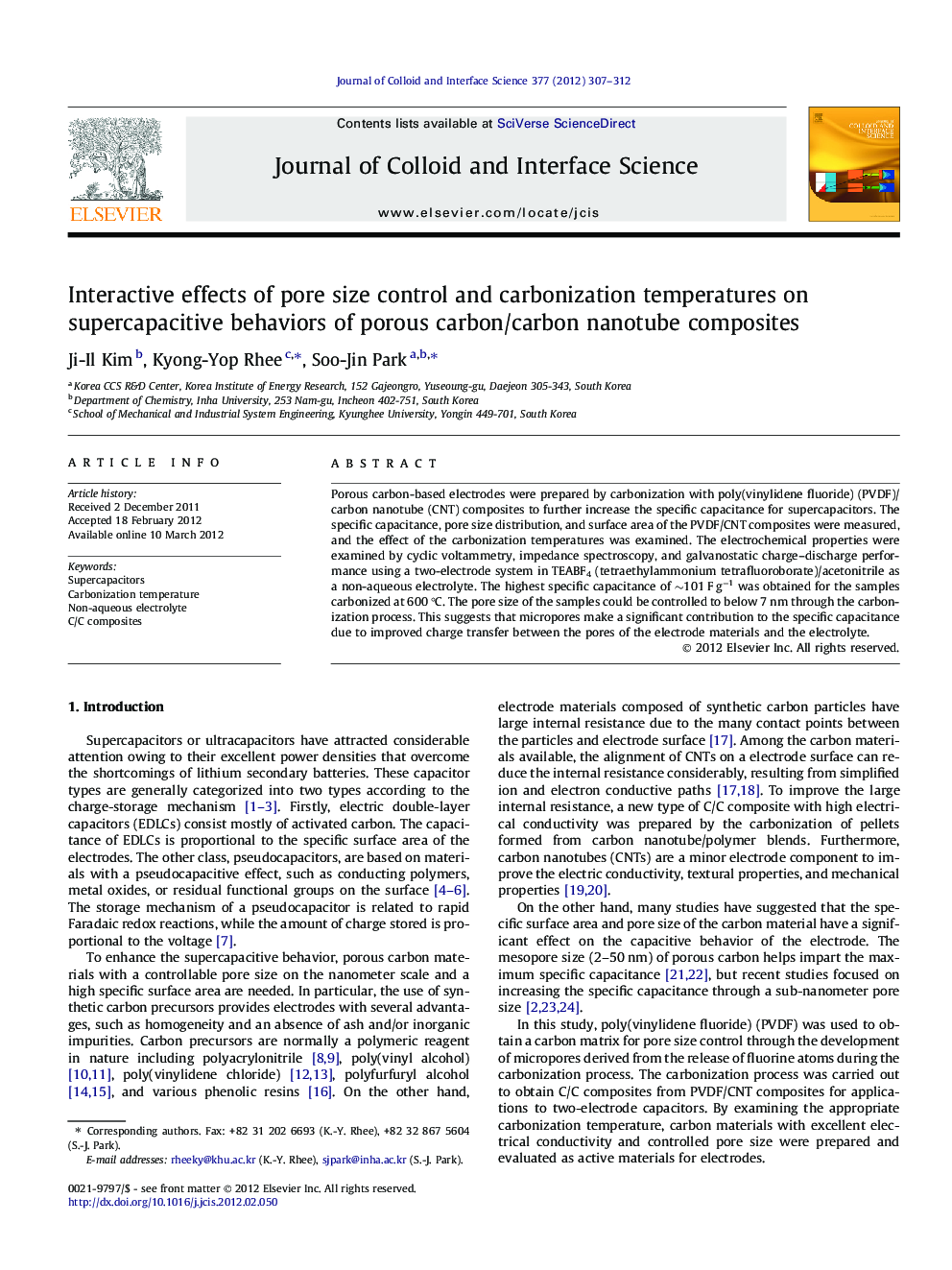| کد مقاله | کد نشریه | سال انتشار | مقاله انگلیسی | نسخه تمام متن |
|---|---|---|---|---|
| 608306 | 880576 | 2012 | 6 صفحه PDF | دانلود رایگان |

Porous carbon-based electrodes were prepared by carbonization with poly(vinylidene fluoride) (PVDF)/carbon nanotube (CNT) composites to further increase the specific capacitance for supercapacitors. The specific capacitance, pore size distribution, and surface area of the PVDF/CNT composites were measured, and the effect of the carbonization temperatures was examined. The electrochemical properties were examined by cyclic voltammetry, impedance spectroscopy, and galvanostatic charge–discharge performance using a two-electrode system in TEABF4 (tetraethylammonium tetrafluoroborate)/acetonitrile as a non-aqueous electrolyte. The highest specific capacitance of ∼101 F g−1 was obtained for the samples carbonized at 600 °C. The pore size of the samples could be controlled to below 7 nm through the carbonization process. This suggests that micropores make a significant contribution to the specific capacitance due to improved charge transfer between the pores of the electrode materials and the electrolyte.
Figure optionsDownload high-quality image (147 K)Download as PowerPoint slideHighlights
► The porous carbon/carbon nanotube composites for enhanced capacitive behaviors without activation process.
► Well-developed pore structure and high electrical conductivity.
► Good cycling performance and high specific capacitance.
Journal: Journal of Colloid and Interface Science - Volume 377, Issue 1, 1 July 2012, Pages 307–312